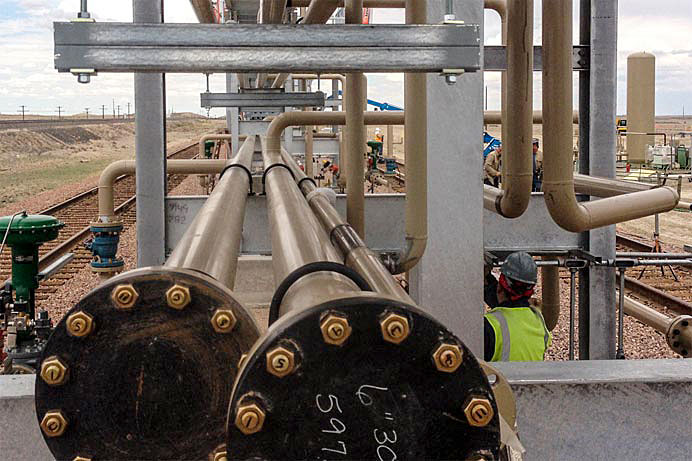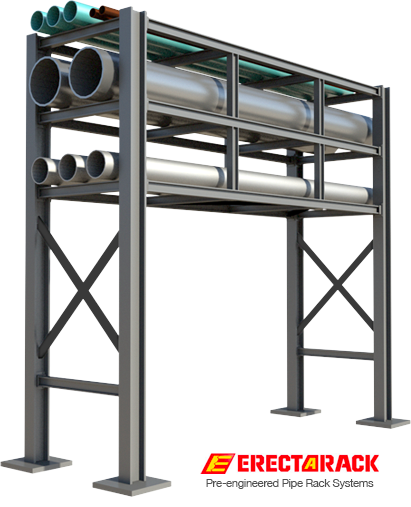
ErectaRack simplifies the traditionally extensive pipe rack design and assembly process, which could frequently consume several weeks or even months. Using advanced laser technology and robotics, ErectaRack’s pre-engineered systems are made with remarkable precision.
The petrochemical sector depends heavily on intricate pipe networks to convey various gases and liquids. These pipe racks, often multilevel and in hard-to-reach locations, represent a considerable fall risk for workers during maintenance or repair duties. Despite having fall protection measures, workers may face other dangers like falling objects or getting trapped between pipe racks. Therefore, oil and gas refineries must establish robust safety procedures. These should encompass frequent checks of the pipe systems, comprehensive employee training, and the application of personal protective gear. By adopting these safety measures, refineries can foster a secure working atmosphere for their employees.
Pipe racks are pivotal in many industrial activities, functioning as key support systems for pipelines and other machinery. Traditionally, the development of pipe rack systems could be time-consuming and intricate, often taking months to finalize. However, incorporating the simple tower and horizontal support configurations allows for designing a custom pipe rack using standard pre-engineered components. This innovative approach significantly reduces time and costs, trimming the design process to a few days. Consequently, pipe racks have become more user-friendly to design and implement, increasing their importance in contemporary industrial processes.
Fall safety is paramount in all industries, particularly where workers frequently navigate elevated platforms. Pipe racks, prevalent in many industrial environments, can present significant fall hazards if not properly secured. A fall from a modest height can lead to severe injuries or fatalities. This emphasizes the importance of a comprehensive fall safety plan that addresses all potential fall risks in a facility.
A key component of pipe rack fall safety is maintaining single access to the system. This reduces the risk of workers unintentionally falling off a loading rack during work. It also streamlines the securing process as all fall hazards can be managed from one access point. If your pipe rack system extends beyond 1,000 feet, your fall safety plan should incorporate complete pass-through techniques to guard workers against falls along the entire length of the rack. Such precautionary measures guarantee worker safety during their routine tasks.
However, fall hazards aren’t restricted to pipe racks; there are also risks related to rail sidings, truck tanks with baffles fitted, and pits within any refinery area. Your refinery’s comprehensive fall protection plan must conform to OSHA standards. By collaborating with the manufacturer, you can identify and prioritize areas of high fall risk. Beyond fall arrest systems, certain areas may also necessitate fall restraint systems. Personal fall arrest systems (PFAS) employ an anchor point and a lanyard or harness to prevent workers from falling, while fall restraint systems (FRS) deter workers from reaching positions that expose them to risk. A well-thought-out fall protection plan ensures your refinery complies with OSHA safety regulations and protects your employees from injuries.

Modular Pipe Racks Faster and Easier than Custom Fabricated
ErectaRack eliminates the long engineering and fabrication process typically involved in pipe rack design and construction, often taking several weeks if not months. ErectaRack’s pre-engineered system is precision manufactured using the latest laser technology and robotics.

Leave a Reply